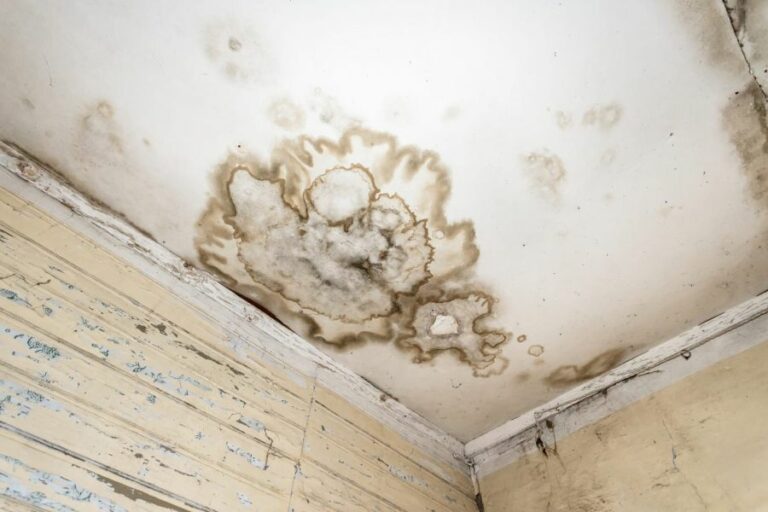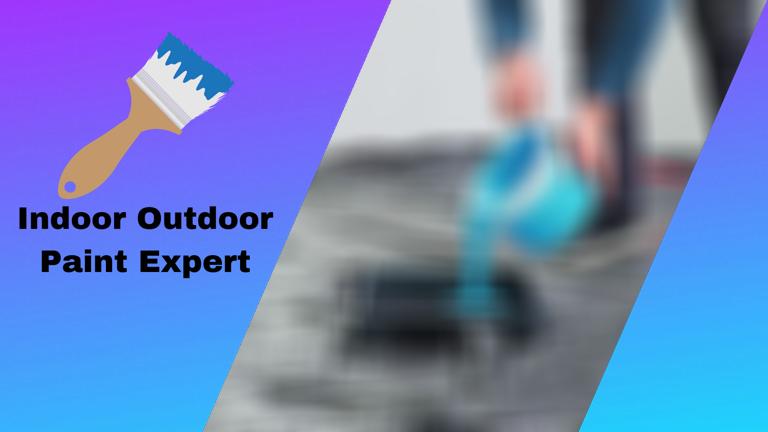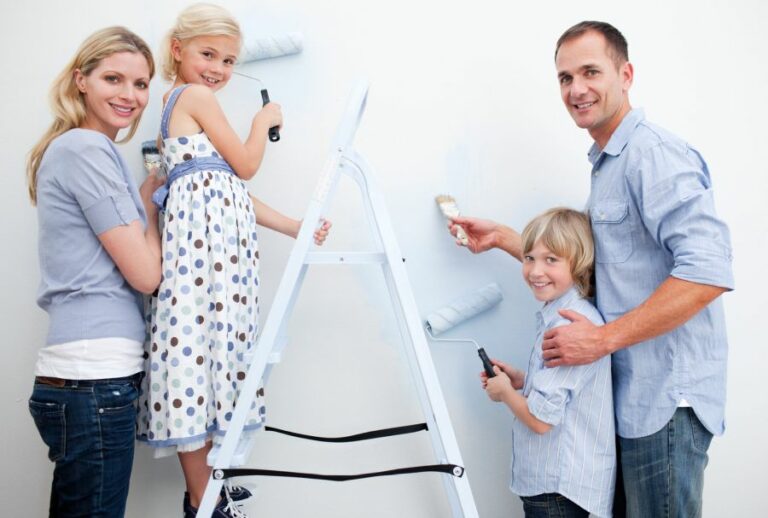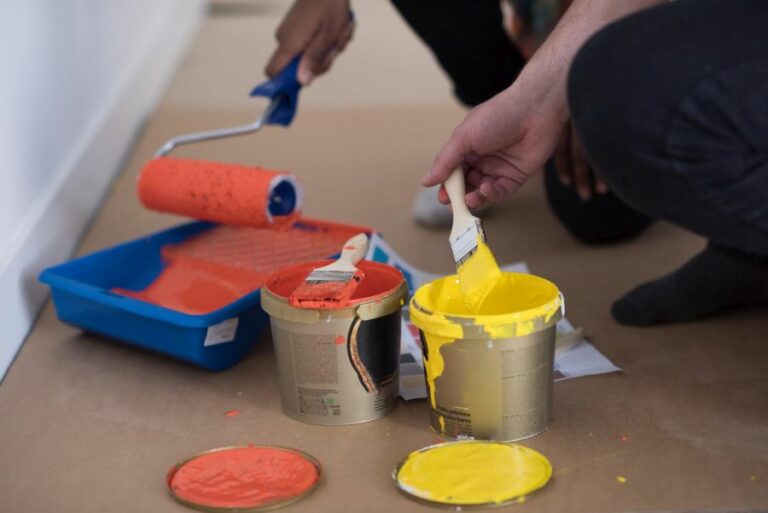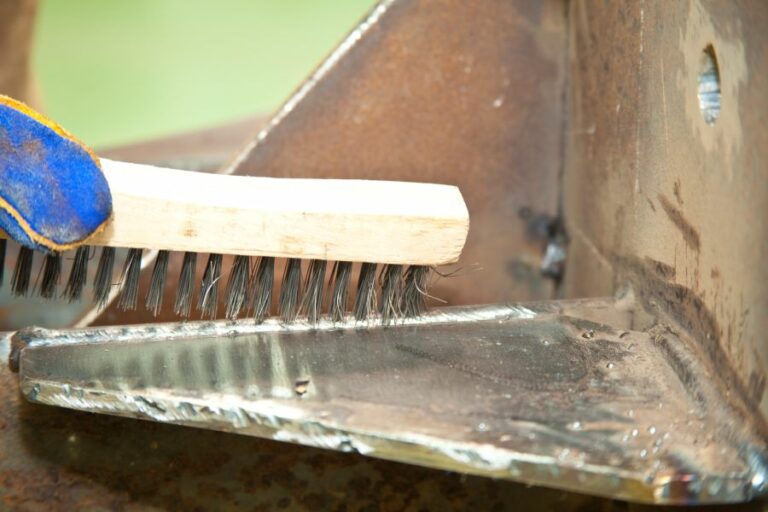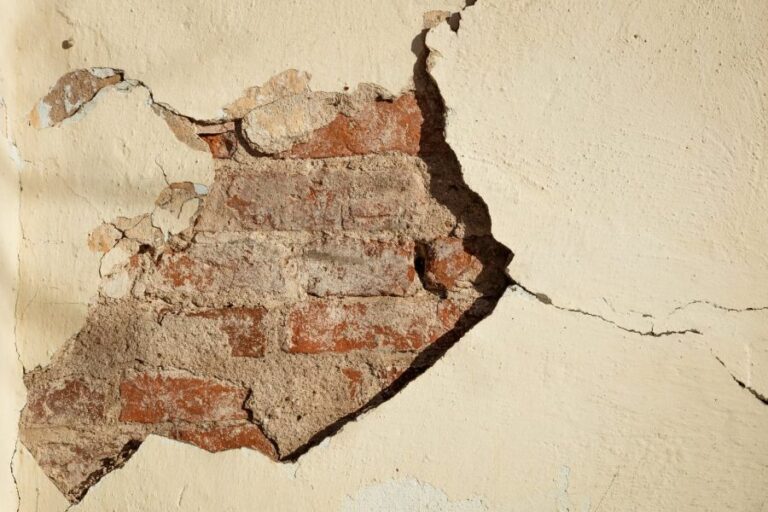Surface Prepping Tools For Efficient Results. What Pros Say
When it comes to achieving efficient results in any painting, coating, or refinishing project, the importance of thorough surface preparation cannot be overstated. Fortunately, with the right tools and techniques at your disposal, you can ensure the success and longevity of your work.
Surface prepping tools for efficient results:
Efficient surface preparation relies on using appropriate tools, such as sandpaper, scrapers, putty knives, steel wool, abrasive pads, wire brushes, electric sanders, pressure washers, needle scalers, shot blasters, and grinding and polishing machines. Employing suitable techniques and prioritizing safety measures, like wearing PPE, ensures optimal outcomes in various industries like construction, painting, woodworking, and automotive repair.

Want to achieve a flawless paint job or pristine flooring? Discover the best surface prepping tools that provide efficient results! Read on to learn how to master the art of surface preparation.
Contents
- 1 Optimize Outcomes with Effective Surface Prep Tools
- 2 Essential Tools for Successful Surface Preparation
- 3 Top Techniques for Accurate Surface Preparation
- 4 Explore Efficient Surface Preparation Techniques
- 5 Various Surface Prep Methods for Repair Projects
Optimize Outcomes with Effective Surface Prep Tools
Surface preparation is an essential step in various industries, such as construction, painting, woodworking, and automotive repair. Proper surface preparation ensures the optimal adhesion of paints, coatings, or adhesives. It also promotes a smoother and long-lasting finish.
• Manual Surface Prepping Tools
Manual tools are ideal for small-scale projects or when you require great precision. They include:
– Sandpaper and Sanding Blocks
Sanding is vital for smoothing surfaces, removing old paint or rust, and scuffing materials for better adhesion. Sandpaper, available in various grits, is an excellent choice for general-purpose surface preparation.
Use sanding blocks to wrap sandpaper around it to maintain an even and consistent pressure while sanding.
– Scrapers and Putty Knives
Scrapers and putty knives are multi-functional tools for surface preparation. Use them to remove loose paint, wallpaper, or accumulated debris from surfaces. They also aid in the application of wood filler or joint compound.
– Steel Wool and Abrasive Pads
These tools are effective for removing rust, paint, or dirt from irregular or hard-to-reach surfaces. Steel wool is available in different grades, whereas abrasive pads come in different materials, such as nylon, aluminum oxide, or silicon carbide.
– Wire Brushes
Wire brushes are highly effective for removing paint, rust, or scale from metal surfaces. They come in various types, such as handheld brushes and attachments for drills or power tools.
• Power Surface Prepping Tools
Power tools speed up surface preparation, making them suitable for large-scale or industrial projects. Some popular power tools include:
– Electric Sanders
Electric sanders, such as orbital, random orbit, and belt sanders, allow for faster, more uniform sanding results. Choose a sander based on the surface material, size, and type of work.
– Pressure Washers
For exterior surfaces, pressure washers help remove dirt, mold, old paint, or other contaminants. They come in various power ratings and nozzle attachments for different cleaning tasks.
– Needle Scalers
Needle scalers are pneumatic tools that use sets of needles to remove rust, scale, paint, or other materials from metal surfaces. They’re beneficial for intricate or hard-to-reach areas.
– Shot Blasters
Shot blasters project small steel shots at high velocity onto concrete or metal surfaces. This process removes old coatings and contaminants and creates a textured surface for better adhesion of new coatings.
– Grinding and Polishing Machines
Grinding and polishing machines are essential for preparing concrete, stone, or marble surfaces. These machines use abrasive discs or wheels to remove surface imperfections and achieve desired levels of smoothness or shine.
• Surface Prepping Techniques
Knowing the right technique for each surface and tool is crucial for achieving efficient and quality results.
– Sanding
For efficient sanding, always start with the lowest-grit sandpaper and work your way up to finer grits. This process ensures an even and smooth surface.
– Scraping
When using scrapers or putty knives, hold them at a shallow angle and apply even pressure to avoid gouging the surface.
– Pressure Washing
For optimal pressure washing results, use the appropriate nozzle attachment and maintain a consistent distance from the surface. Start with lower pressure settings and gradually increase as needed.
– Grinding and Polishing
When using grinding and polishing machines, remember to keep the tool flat on the surface and move it in a consistent pattern. This technique prevents swirl marks or uneven finishes.
• Safety Tips
Proper safety measures are vital when using surface prepping tools. Always wear appropriate personal protective equipment (PPE), such as gloves, safety glasses, hearing protection, and dust masks. Also, follow the manufacturer’s guidelines for tool use and maintenance.
• Final Thoughts
Achieving efficient results in surface preparation depends on using the right tools and techniques for each project. Whether using manual or power tools, always prioritize safety and follow good practices for optimal outcomes.
With experience and proper tool selection, any surface can be transformed into a smooth and clean canvas, ready for the next phase of the project.
Essential Tools for Successful Surface Preparation
Surface preparation is a critical step in maintaining and enhancing the appearance and longevity of materials, particularly in the realms of painting, coating, and flooring.
• Blasting Equipment
– Abrasive Blasting
Abrasive blasting, otherwise known as sandblasting, is a highly effective and commonly used surface preparation method for removing rust, paint, and other contaminants from surfaces.
The equipment required for abrasive blasting includes a blast pot (which contains the abrasive media), a compressor (that supplies compressed air), hoses, a blast nozzle, and proper safety gear, such as respirators and blast suits.
For abrasive blasting to be effective, the choice of media is crucial. Common media types include steel shot, steel grit, glass beads, and garnet, among others. The selection of the most appropriate media depends on factors such as the substrate material and the desired surface profile.
Further information on choosing the right abrasive media can be found on the SSPC website.
– Dry Ice Blasting
Dry ice blasting involves projecting solid carbon dioxide (CO2) pellets at high velocities onto surfaces. This method is known for its non-abrasive, non-toxic, and non-conductive properties, making it suitable for a wide range of applications.
The main components of a dry ice blasting system include a dry ice pelletizer, a blasting machine, air compressors, and a nozzle. Adequate safety measures, such as protective clothing and eye protection, are necessary when handling dry ice.
• Grinding and Polishing Equipment
– Floor Grinders
For larger surface areas, such as concrete floors, using a floor grinder is often recommended. Floor grinders are walk-behind, electric-powered machines that employ rotating grinding wheels to level and profile surfaces.
These machines typically come with an array of grinding accessories, such as diamond, carbide, or stone abrasives, to address different surface conditions. Vacuum attachments are also essential for dust control and maintaining a clean work environment.
– Angle Grinders
Angle grinders are versatile, hand-held power tools used for cutting, grinding, and polishing various materials, including metal, concrete, and wood. These grinders can be fitted with a variety of attachments, such as grinding discs, flap discs, and wire brushes, depending on the application.
When using an angle grinder, wearing appropriate personal protective equipment (PPE), such as gloves, safety glasses, and hearing protection, is essential to ensure operator safety.
• Power Washing Equipment
– Pressure Washers
Pressure washers are an indispensable tool for many surface preparation projects, especially involving concrete and masonry substrates. These devices use a high-pressure jet of water to remove loose paint, mold, dirt, and other contaminants from surfaces.
Pressure washers are available in various power ranges (measured in PSI pounds per square inch) and can be outfitted with specialized nozzles for specific applications.
– Steam Cleaners
Steam cleaners use a combination of hot water and high pressure to clean, sanitize, and degrease various surfaces. This method is particularly useful for removing oil, grease, and other stubborn substances. Steam cleaners can be used on a wide range of materials, including metal, concrete, tile, and plastic.
Maintenance professionals in various industries, such as automotive, food service, and manufacturing, can benefit from the use of steam cleaning equipment.
• Chemical Surface Treatments
– Rust Converters
Rusted surfaces can pose significant challenges when it comes to surface preparation. Rust converters, which are chemical solutions that convert rust into an inert substance, can be an effective solution in these cases.
To use rust converters, one needs to apply the solution to the rusted areas using brushes, rollers, or sprayers. Once the treatment is complete, the surface can be painted or coated as desired.
– Degreasers
Degreasers are chemical products designed to remove grease, oil, and other contaminants from surfaces. They are typically applied to the surface using a brush, a cloth, or a sprayer and left to work for a specific period before being wiped or rinsed off.
Choosing the right type of degreaser is crucial, as different formulations are suitable for different materials and applications.
• Additional Surface Preparation Tools
In addition to the equipment mentioned above, several hand tools are commonly used in surface preparation tasks. These include but are not limited to wire brushes, scrapers, putty knives, and sanding blocks.
In conclusion, the equipment and tools used in surface preparation play a vital role in the overall success and quality of painting, coating, and flooring installations.
Familiarizing yourself with the various equipment types and their functions is essential for proper surface preparation, leading to more durable, long-lasting, and aesthetically pleasing results.
Top Techniques for Accurate Surface Preparation
Surface preparation is a crucial step in many industries, including construction, painting, and manufacturing. It involves the removal of impurities, contaminants, and existing coatings from a substrate, ensuring proper adhesion of new coatings, and minimizing the risk of defects.
• Abrasive Blasting
Abrasive blasting, also known as sandblasting or grit blasting, is a widely-used surface preparation technique. It involves the use of compressed air or water to propel abrasive particles against a surface at high velocity, removing unwanted materials and creating a clean, rough surface.
– Types of Abrasive Blasting:
- Dry abrasive blasting: The most common type, dry abrasive blasting, uses compressed air to propel the abrasive particles. It is suitable for a wide range of applications, including the removal of rust, paint, and scale from various surfaces.
- Wet abrasive blasting: This method combines water with the abrasive particles, reducing the amount of dust generated during the process. Wet abrasive blasting is ideal for use in environments where dust control is important, such as in enclosed spaces or near sensitive equipment.
- Vapor abrasive blasting: A more advanced form of wet blasting, vapor abrasive blasting combines water and abrasives into a slurry, which is then propelled at high pressure. This method uses less water than traditional wet blasting, reducing the risk of water damage to delicate surfaces or equipment.
One of the most significant advantages of abrasive blasting is its versatility, as it can be used on a wide variety of materials and surfaces, including metal, concrete, and wood.
• Chemical Cleaning
Chemical cleaning sometimes referred to as chemical etching or acid etching, involves the application of specific chemicals to remove contaminants, rust, and scale from a surface. This method is typically used for delicate surfaces or materials for which abrasive blasting may not be suitable.
– Common Chemical Cleaning Methods:
- Acid etching: Primarily used for the preparation of concrete surfaces, acid etching involves the application of a mild acid solution (usually phosphoric or muriatic acid) to the surface. It is crucial to rinse the surface thoroughly with water after the etching process to neutralize the acid and remove any remaining contaminants.
- Alkaline cleaning: Used for the removal of grease, oil, and other organic contaminants from metal surfaces, alkaline cleaning involves the application of an alkaline solution (usually sodium hydroxide or potassium hydroxide) to the surface. Like acid etching, it is essential to rinse the surface with water after cleaning.
- Solvent cleaning: Suitable for the removal of paint, varnish, and other coatings, solvent cleaning involves the application of a solvent (such as acetone, toluene, or xylene) to the surface, followed by wiping or brushing the surface to remove the coating.
It is essential to follow safety precautions and ensure proper ventilation when using chemical cleaning methods, as the chemicals involved can be hazardous to both the environment and personal health.
• Mechanical Surface Preparation
Mechanical surface preparation methods involve the use of machines, tools, and abrasives to physically remove contaminants and create a clean, rough surface.
– Common Mechanical Surface Preparation Techniques:
- Grinding: Using abrasive wheels or discs, grinding is often employed to remove rust, scale, and other contaminants from metal surfaces, as well as to level and smooth concrete surfaces.
- Scarifying: Ideal for the preparation of concrete surfaces, scarifying involves the use of a machine equipped with rotating cutting wheels to remove existing coatings and create a rough, textured profile.
- Shot peening: A variation of abrasive blasting, shot peening involves the use of round, metallic shot particles to bombard the surface, creating compressive stress and enhancing the fatigue life of materials like metal and aluminum.
• Summary
Each surface preparation technique offers unique benefits and challenges. Therefore, it’s essential to select the appropriate technique depending on factors such as the material, the surface condition, and the intended purpose of the surface preparation.
When deciding on a surface preparation method, I recommend consulting an expert to ensure the chosen technique is suitable for your specific needs and to avoid potential damage to the surface or the environment.
Always prioritize safety and follow proper guidelines when utilizing any of these surface preparation techniques.
| Most Common Surface Preparation Techniques |
|---|
| Cleaning |
| Scrubbing |
| Sanding |
| Abrasive blasting |
| Grinding |
| Chemical etching |
| Ultrasonic cleaning |
| Plasma treatment |
Explore Efficient Surface Preparation Techniques
Surface preparation is a crucial step in many industrial processes, as it ensures the long-lasting adhesion and performance of coatings, adhesives, and other materials.
• Cleaning Techniques
Before applying any surface treatment, it is essential to clean the surface thoroughly to remove contaminants such as dust, dirt, grease, and oil. These contaminants can negatively affect the adhesion and long-term performance of coatings and adhesives.
– Solvent Cleaning
Solvent cleaning is a widely used method for removing dirt, grease, and other contaminants. This technique involves the use of solvents to dissolve and wash away unwanted debris. Common solvents used in this process include acetone, alcohol, and mineral spirits.
Recommendation: Use solvent cleaning when working with metals or other surfaces that are resistant to chemical damage.
– Alkaline Cleaning
Alkaline cleaning is another common method for removing oily residues and other contaminants from surfaces. This technique uses alkaline cleaning solutions, usually a mix of water and specialized detergents or degreasers, to break down and remove contaminants.
Recommendation: Choose alkaline cleaning for surfaces that are sensitive to solvent exposure, such as certain plastics and composites.
– Ultrasonic Cleaning
Ultrasonic cleaning uses high-frequency sound waves to create microscopic bubbles in a liquid solution, which then implode, generating localized pressure and heat.
This process helps to remove contaminants from surfaces at a microscopic level, making it an effective method for cleaning intricate or hard-to-reach areas.
Recommendation: Implement ultrasonic cleaning for precise and intricate components, such as electronic parts and small mechanical components.
• Mechanical Surface Preparation Techniques
Mechanical surface preparation techniques involve the use of abrasive materials, tools, and equipment to physically alter a surface, enhancing its properties for better adhesion of coatings or adhesives.
– Abrasive Blasting
Abrasive blasting uses compressed air or pressurized water to propel abrasive particles against the surface, removing contaminants and imparting a desired surface roughness. Common types of abrasive blasting include sandblasting, glass bead blasting, and soda blasting.
Recommendation: Employ abrasive blasting for larger surfaces, such as steel structures and concrete, where uniform roughening is required.
– Grinding
Grinding is a widely used mechanical surface preparation method that involves the use of abrasive wheels to remove contaminants and create a smooth or rough surface finish, depending on the desired outcome. Grinding can be performed on various surfaces, such as metal, concrete, and wood.
Recommendation: Opt for grinding when working with flat surfaces or creating specific surface finishes.
– Shot Peening
Shot peening is a process that involves blasting small, round particles (usually steel, ceramic, or glass) at high velocity onto the surface to create compressive residual stresses. This can improve the fatigue properties, corrosion resistance, and overall lifespan of metal components.
Recommendation: Consider shot peening for metallic parts that require enhanced durability and fatigue resistance.
• Chemical Surface Preparation Techniques
Chemical surface preparation techniques use chemical reactions to modify a surface, improving its compatibility with coatings, adhesives, and other materials.
– Acid Etching
Acid etching involves applying an acid solution to a surface, causing a chemical reaction that dissolves a thin layer of material from the surface. This method can create a controlled roughness, providing an improved bonding surface for coatings and adhesives.
Recommendation: Use acid etching for materials such as glass, ceramics, and metals that require precise surface roughness.
– Conversion Coating
Conversion coating is a process that uses chemical reactions to create a thin protective layer (usually an oxide or phosphate) on the surface of a metal. This layer enhances corrosion resistance, improves paint adhesion, and contributes to the overall aesthetic appearance of the material.
Recommendation: Apply conversion coating to metals such as aluminum, steel, and zinc to improve their overall performance and appearance.
– Anodizing
Anodizing is an electrochemical process used primarily on aluminum surfaces to create a hard, protective, and aesthetically appealing oxide layer. This process offers enhanced corrosion resistance, better adhesion, and improved electrical insulation properties.
Recommendation: Choose to anodize for aluminum parts, particularly in applications where both aesthetics and durability are essential.
• Surface Preparation in Practice
Selecting the right surface preparation technique depends on the specific material, application, and required outcome.
It is critical to follow industry standards and guidelines, such as those provided by the Society for Protective Coatings (SSPC) and the National Association of Corrosion Engineers (NACE), to ensure optimal results.
In conclusion, effective surface preparation is an essential factor in achieving long-lasting adhesion and performance of coatings and other materials.
Understanding the available techniques, their applications, and how to choose the appropriate method for your project will lead to better overall results and long-term success.
Technique | Description |
|---|---|
Cleaning | Removing dirt, grease, and contaminants from the surface to ensure proper adhesion of coatings or treatments. |
Abrasive blasting | Using high-velocity particles to clean and roughen a surface, improving adhesion of coatings and treatments. |
Grinding | Using abrasive tools to smooth and level a surface, removing imperfections and preparing it for painting or coating. |
Chemical etching | Applying chemical solutions to a surface to remove contaminants or create a desired surface profile. |
Acid pickling | Using acid solutions to remove rust, scale, or other contaminants from a surface, allowing for better adhesion of coatings. |
Ultrasonic cleaning | Using high-frequency sound waves to remove contaminants from a surface, providing a thorough cleaning. |
Scraping | Manually removing loose paint, rust, or other contaminants from a surface with a scraper or other hand tool. |
Sanding | Using abrasive materials to smooth and even out a surface, preparing it for painting or other treatments. |
Various Surface Prep Methods for Repair Projects
Surface preparation is a crucial step in the process of repair work. Properly prepared surfaces ensure a long-lasting and effective repair, while poorly prepared surfaces can lead to premature failure of the repair materials.
• Mechanical Methods
– Abrasive Blasting
Abrasive blasting, also known as sandblasting, is a common method used to clean and roughen surfaces before repair work. It involves projecting abrasive materials such as sand, glass beads, or steel shot at high velocity onto the surface to remove contaminants and create a rough texture.
Abrasive blasting is suitable for removing rust, scale, or old coatings on steel, and it can also be used to clean surfaces made of concrete, brick, or stone.
When using abrasive blasting for surface preparation, it is essential to select the appropriate abrasive material and equipment parameters to avoid damage or over-preparation of the surface.
Also, proper containment and disposal of spent abrasive material must be practiced to minimize environmental impact.
– Grinding and Scarifying
Grinding is another mechanical method commonly utilized for surface preparation, particularly on concrete surfaces. It is done using powered tools with rotating abrasive discs or drums that remove surface material and contaminants, exposing a clean, rough surface.
Similarly, scarifying involves using a machine equipped with cutting wheels or drums to remove surface material and create a rough texture suitable for the repair materials to bond.
Both grinding and scarifying can be used for leveling or contouring concrete surfaces, removing coatings or adhesives, and repairing spalled or deteriorated areas.
Attention to the equipment’s speed and pressure is critical in preventing damage to the surface and ensuring the desired level of surface roughness is achieved.
– High-Pressure Water Jetting
High-pressure water jetting is a mechanical method that uses a high-velocity water stream to clean surfaces and remove contaminants.
While it is commonly used in steel and concrete surface preparation, it is also effective on other materials such as wood, plastics, and masonry.
The pressure of the water jet can be adjusted according to the targeted contaminants and the surface material. For example, low pressures are used to remove dust and dirt from surfaces, while higher pressures are needed to remove paint or rust.
This method is eco-friendly and avoids the use of abrasive materials.
However, it may not be suitable for all surfaces, and the possibility of surface damage or water infiltration must be considered.
• Chemical Methods
– Acid Etching
Acid etching is a chemical method of surface preparation commonly used on concrete surfaces. It involves applying a diluted solution of hydrochloric, phosphoric, or sulfuric acid to the surface, which reacts with the calcium hydroxide present in the concrete to form a rough texture.
The use of acid etching requires proper ventilation and protective gear due to the release of harmful gases during the reaction, as well as a thorough rinsing and neutralization process to remove and dispose of the acid safely.
The Environmental Protection Agency (EPA) regulates the disposal of wastes generated from acid etching, so proper handling and disposal procedures must be followed to avoid penalties.
A resource on proper disposal procedures can be found on the EPA’s website here.
– Degreasing and Solvent Cleaning
Degreasing and solvent cleaning involve using chemical agents to remove contaminants such as grease, oil, or adhesives from surfaces. Commonly used solvents include acetone, methyl ethyl ketone (MEK), or xylene.
It is essential to select the proper solvent for the targeted contaminants and ensure the solvent residues do not interfere with the adhesion of repair materials.
Ventilation and protective gear are required when using solvents for surface preparation, as these chemicals can be hazardous to health and the environment.
• Recommendations and Considerations
Selecting the appropriate method of surface preparation depends on the material and the contaminants present on the surface. In case of doubt, consulting the manufacturer of the repair materials or an experienced professional is recommended.
Several factors, including cost, environmental impact, and efficiency, should be considered when choosing a suitable method. Additionally, the use of personal protective equipment and proper handling and disposal of waste materials should not be overlooked.
In summary, surface preparation plays a vital role in ensuring the success and durability of repairs. Understanding the various methods available and their appropriate applications will contribute to higher quality and longer-lasting repair work.
Method | Description |
|---|---|
1. Cleaning | Removing dirt, debris, and contaminants from the surface using water, solvents, or chemical cleaning agents. |
2. Abrasive Blasting | Using high-pressure air or water to propel abrasive materials against the surface, removing rust, mill scale, and old coatings. |
3. Grinding | Using an abrasive wheel to remove material and create a smooth surface, often used to prepare concrete surfaces. |
4. Power Tool Cleaning | Using power tools like wire brushes, sanders, and grinders to remove rust, paint, and other coating materials. |
5. Acid Etching | Applying a diluted acid solution to the surface, which reacts with the concrete to roughen the surface, and then rinsing. |
6. Flame Cleaning | Burning off old paint, oil, and other contaminants using a gas torch, followed by scraping and wire brushing. |
7. Hand Tools | Using hand tools like scrapers, wire brushes, and sandpaper to clean and prepare the surface. |
8. High-Pressure Water Jetting | Using pressurized water to blast away contaminants and roughen the surface particularly useful for large areas or vertical surfaces. |

